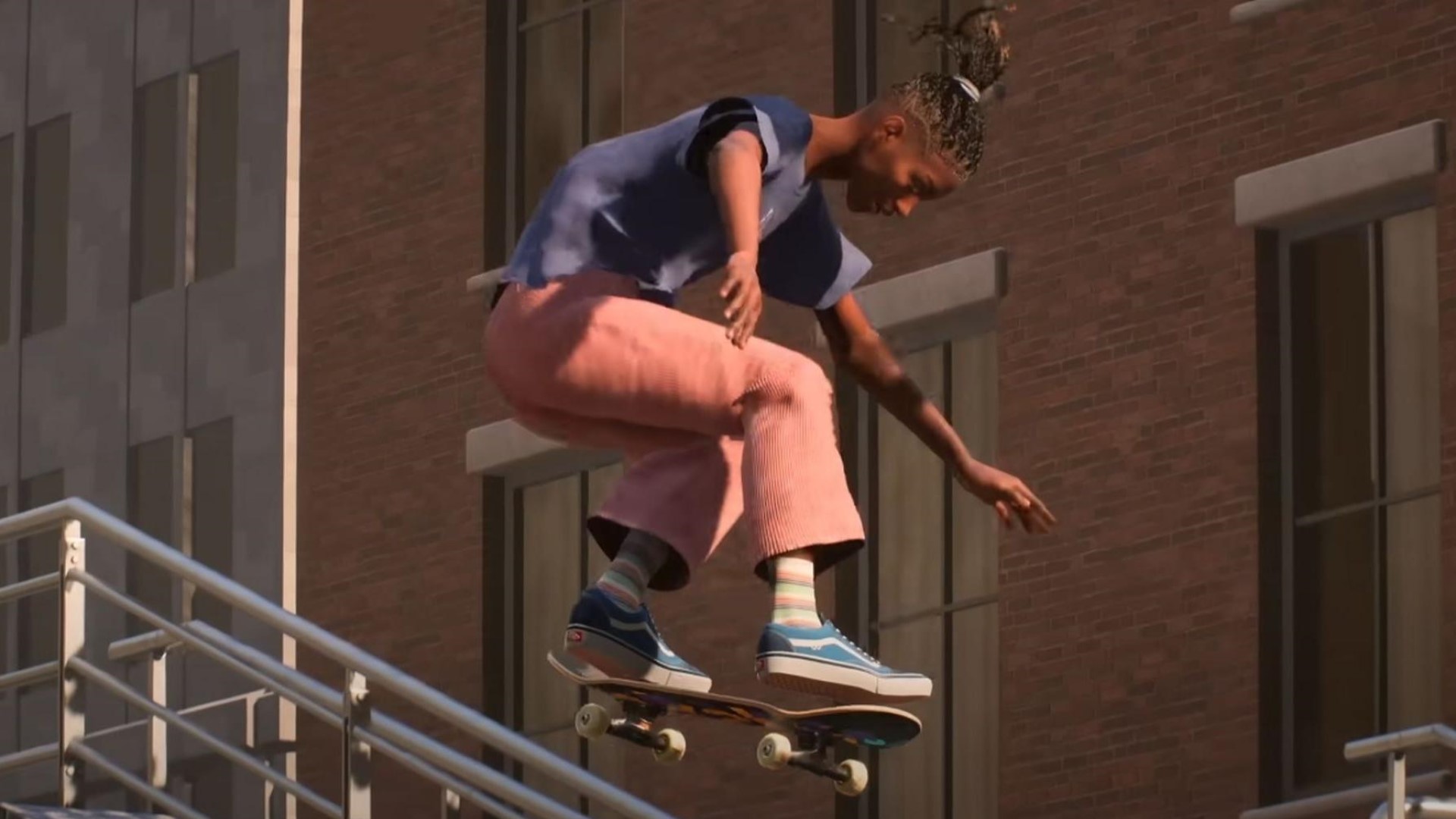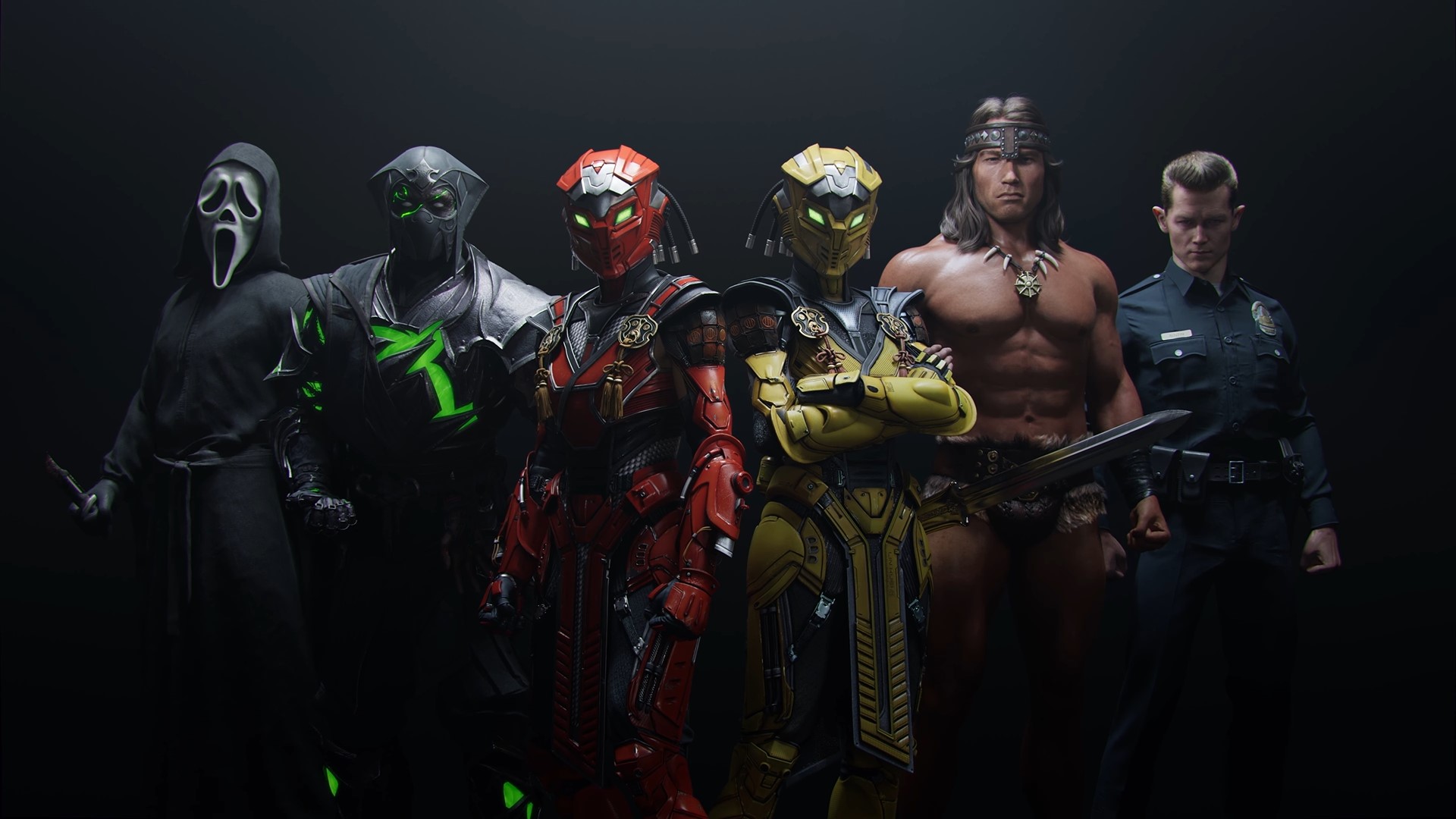
Konami isn’t going to let you forget that Silent Hill: The Short Message is, in fact, a Silent Hill game, but something’s missing. In this one, you follow a teenage girl named Anita, who wakes up in an abandoned apartment building; after getting strange text messages from her friend Maya, Anita goes out to find her. Along the way, she confronts her trauma and guilt while getting sucked into a horror straight out of her tortured psyche. Does that sound familiar? If you’ve played Silent Hill 2 or many other games made after it, you bet it does.
The Short Message, which never got officially announced even though fans knew it was in development, suddenly dropped on the PlayStation Store after its first trailer was shown off during Sony’s January State of Play. Even stranger, it was free to play. Konami partnered with Hexadrive on the game, which takes just a couple hours to play through and works both as a standalone experience and as a harbinger of Silent Hills to come.
[Ed. note: This review contains spoilers for Silent Hill: The Short Message. It also features discussion of bullying, mental illness, and suicide.]
The new title plays like many Silent Hill games before it. Like P.T., The Short Message uses a loop to tell a story about being stuck in your worst nightmare. Anita is brought to an abandoned apartment building with no idea how she got there and has to walk around to find her way out. Until she faces both metaphorical and physical demons, she’s trapped. She has no weapons or items to help her beyond her phone, which she uses as a flashlight and as a way to talk to her friends Maya and Amelie.
There are multiple loops throughout the game, and they’re great at ramping up the tension. In one, Anita walks around her old apartment, and every time she restarts the loop, she gets smaller. Once I realized that I was becoming child-sized as I relived Anita’s childhood trauma and learned more about her mother, something sank in my stomach. I saw myself getting weaker and more helpless, which played well with Anita’s experience.
The most prominent place you’ll see these loops is in the game’s only action sequences, where you have to run away from a monster, clearly supposed to resemble Maya. Considering Pyramid Head creator Masahiro Ito worked on The Short Message, it’s no surprise that it’s such an intense creature. It looks horrific but oddly beautiful, rendered in pastels that pop against the dark. She also moves at a different framerate, making her motions look jerky and unnerving. Not sure what the name of it is yet (Cherry Blossom School Girl maybe?), but it’ll definitely be one of the franchise’s most memorable monsters.
:no_upscale()/cdn.vox-cdn.com/uploads/chorus_asset/file/25262070/silent_hill_short_message_monster.jpg)
Image: Konami
Running from the monster is a bit reminiscent of trying to escape the Void in Silent Hill: Downpour, although thankfully a lot less annoying. You have to navigate looping mazes while using your phone to listen for static (a common Silent Hill mechanic) to avoid the monster, which instantly sends you back to the beginning. Like the building, these mazes become more dilapidated and terrifying over time, with the last one running you through a Silent Hill-esque other world covered in metal grates and surrounded by fire.
Another hallmark of modern Silent Hill seems to be taking the concept of a town that reflects the protagonist’s worst fears and trauma, and expanding those horrors throughout the world. The Short Message takes place in Germany, specifically in the fictional town of Kettenstadt. The place is described as a “border stronghold” that once had big revitalization dreams until the COVID-19 pandemic caused investors to pull out funding. Many of the buildings are therefore abandoned, including the Villa apartment building, where the game takes place.
It’s impressive how fleshed-out Kettenstadt feels, and like the best of Silent Hill, it’s a character in itself. This is only a two-hour game, so there’s only so much detail here, and you don’t see anything beyond the Villa, but there’s still enough to drive home how Silent Hill-esque Kettenstadt is — in part due to its tragic backstory and current state of neglect. Even when the world around you looks worse with each loop, you never feel like you’ve left the Villa. Anita’s state of mind might make the environments look grimier and more wretched, but the line is always blurred between Kettenstadt’s actual state and its Silent Hill version. Utilizing the pandemic also adds some needed depth, especially now that we’re in 2024 and are still seeing its effects widely. (Is this the first significant COVID game?)
:no_upscale()/cdn.vox-cdn.com/uploads/chorus_asset/file/25262057/silent_hill_short_message_anita.jpeg)
Image: Konami via playtecharena
The Villa is haunted in other ways. Anita’s mental state has some effect, but Kettenstadt’s history plays a huge role. Beyond general disrepair, it has become a spot where almost yearly, a young girl dies by suicide from jumping off the roof. Right off the bat, Konami makes clear via in-game messages that The Short Message will tackle some heavy themes, including bullying, self-harm, and suicide. This is something the game will never let you forget, as it’s conveyed through multiple content warnings with links to resources and mention of the U.S. Suicide and Crisis Lifeline. Suicide is a huge part of Anita’s and the town’s story.
For the most part, I think the subject of suicide is handled respectfully here. However, when Anita attempts suicide herself, it feels borderline tacky. Every time she jumps from the roof, the game takes a break to bring up that content warning again. She does this twice. The first time is extremely jarring — you don’t see suicide depicted so blatantly in video games very often, and when the hotline card pops up, you might think for a moment that that’s how the game ends. When it happens the second time, it feels forced, like the game is apologizing for putting you through that moment again.
I understand why the developers erred on the side of caution when it came to warning players about the subject matter, but trying to hold the player’s hand through it all doesn’t change the fact that the story is still leaning on shock value. It’s concerning that the game’s creators seemingly don’t trust the audience to understand a content warning without it being shown multiple times – or maybe there’s an insecurity about showing this imagery to players. I worry that future Silent Hill games will approach those themes similarly.
:no_upscale()/cdn.vox-cdn.com/uploads/chorus_asset/file/25262071/silent_hill_short_message_content_warning.jpeg)
Image: Konami via playtecharena
Anita is a terminally depressed teen, and considering all the reveals about her character and relationships, her contemplation of suicide definitely fits her overall story. I appreciate that Konami didn’t shy away from this. On the other hand, the game beats you over the head with it, both in terms of the hotline messages and in how often it’s brought up.
It doesn’t help that Anita’s character for most of the game is that she is depressed and trying to cover it up while texting her friend Amelie, her only connection to the outside world. When she’s alone, though, and rummaging through the abandoned apartment building, her dialogue mostly involves putting herself down. “I’ve always been trapped,” she says at one point. She wonders if she deserves to live or if people notice her at all. Anita is a teenager, and teenagers can be annoying, so I didn’t mind that her dialogue was sometimes very dramatic. But while depression can be all-consuming, The Short Message doesn’t give Anita much more definition beyond her mental illness.
A lot of The Short Message feels heavy-handed in its themes, from suicide to the impact of social media to the cruelty of bullying. There are notes all over the walls with insults scribbled on them, and they all feel a bit on the nose. I know sometimes bullying isn’t clever, but the notes and the voices shouting “Freak!” or “Slut!” got repetitive fast. It’s another place where the audience isn’t trusted to understand the story without it being spelled out.
:no_upscale()/cdn.vox-cdn.com/uploads/chorus_asset/file/25262080/silent_hill_short_message_bullying_hallway.jpeg)
Image: Konami via playtecharena
The Short Message is also extremely unsubtle when it comes to its Silent Hill connections. In the first room, you’ll find a defaced Little Hope town sign from Silent Hill: Homecoming, and, of course, the looping rooms in The Short Message are similar to the core system in P.T. One particularly groan-worthy moment involves a note talking about the “Silent Hill Phenomenon,” which is brain fog so intense that victims see actual fog. And yes, it’s named after the town. In case you weren’t sure about what kind of game this was, you’ve now been educated.
It’s not just references — The Short Message is just doing a beat-for-beat Silent Hill performance, but at a smaller scale. It’s not just a matter of Konami publishing games that fit in with a series and more about how it feels to watch something replicated, sometimes poorly. The Short Message does have its moments, like Cherry Blossom School Girl, and some of the loops are great. Plus, it’s a stunning game to look at, with some unique imagery that makes me feel optimistic about the series’ future. This is very much a Silent Hill retread, even if it’s a particularly good one, and Konami wants you to know it. It makes you wonder if all the upcoming titles will take a similar path.
Silent Hill: The Short Message is now available for free on PlayStation 5.








